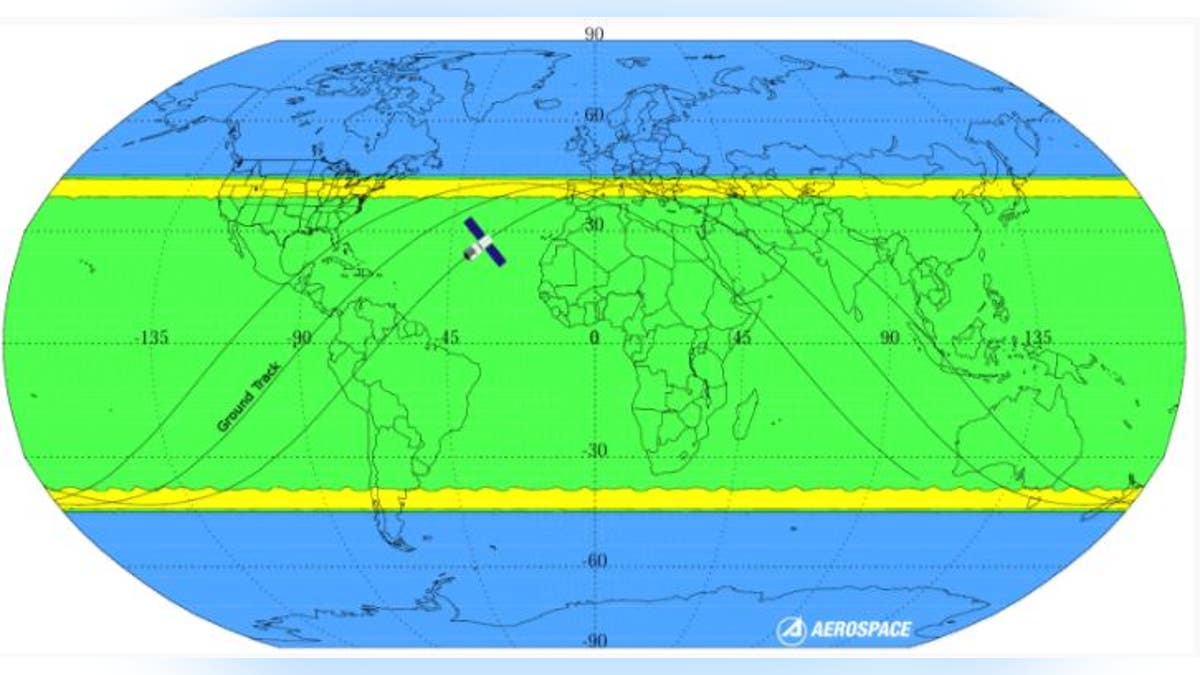
This image shows the probability of debris from a Chinese space station hitting various parts of Earth. (Aerospace.org)
Look out for—falling space debris?
A large Chinese satellite that’s free-falling to Earth could crash into southern Michigan sometime between now and early April, researchers say.
According to a new report from the Aerospace Corporation, southern portions of lower Michigan fall into the regions listed as having a high probability of debris landing from the 8.5-ton space station. The report also identifies northern China, central Italy and northern Spain as regions with higher chances of impact.
China lost control of the Tiangong-1 in 2016. The European Space Agency believes it will re-enter Earth’s atmosphere sometime between March 24 and April 19, reports CNBC.
“There is a chance that a small amount of Tiangong-1 debris may survive re-entry and impact the ground,” reports Aerospace. “Should this happen, any surviving debris would fall within a region that is a few hundred kilometers in size and centered along a point on the Earth that the station passes over.”
In the Aerospace graphic, yellow areas have a higher probability of debris, green areas have a small chance and blue areas have zero probability of debris landing.
MEDIEVAL MYSTERY: BIZARRE PORPOISE BURIAL BAFFLES EXPERTS
Scientists say that a majority of the station is expected to burn up when it re-enters Earth’s atmosphere, although chunks weighing up to 220 pounds could make landfall.
Harvard University astrophysicist Jonathan McDowell tweeted recently that “confusion remains widespread” in predicting the station’s re-entry location, date and time.
NASA made its own uncontrolled space station entry back to Earth in 1979 with its much bigger 77-ton SkyLab, reports TIME.
Known as the "Heavenly Palace," Tiangong-1 launched in September 2011 and was viewed as a major step for the space agency in its quest to build a space station by 2020. According to NASA, iangong-1 largely served as a demonstration of the "vital docking technology required for a future space station" when it was active.
